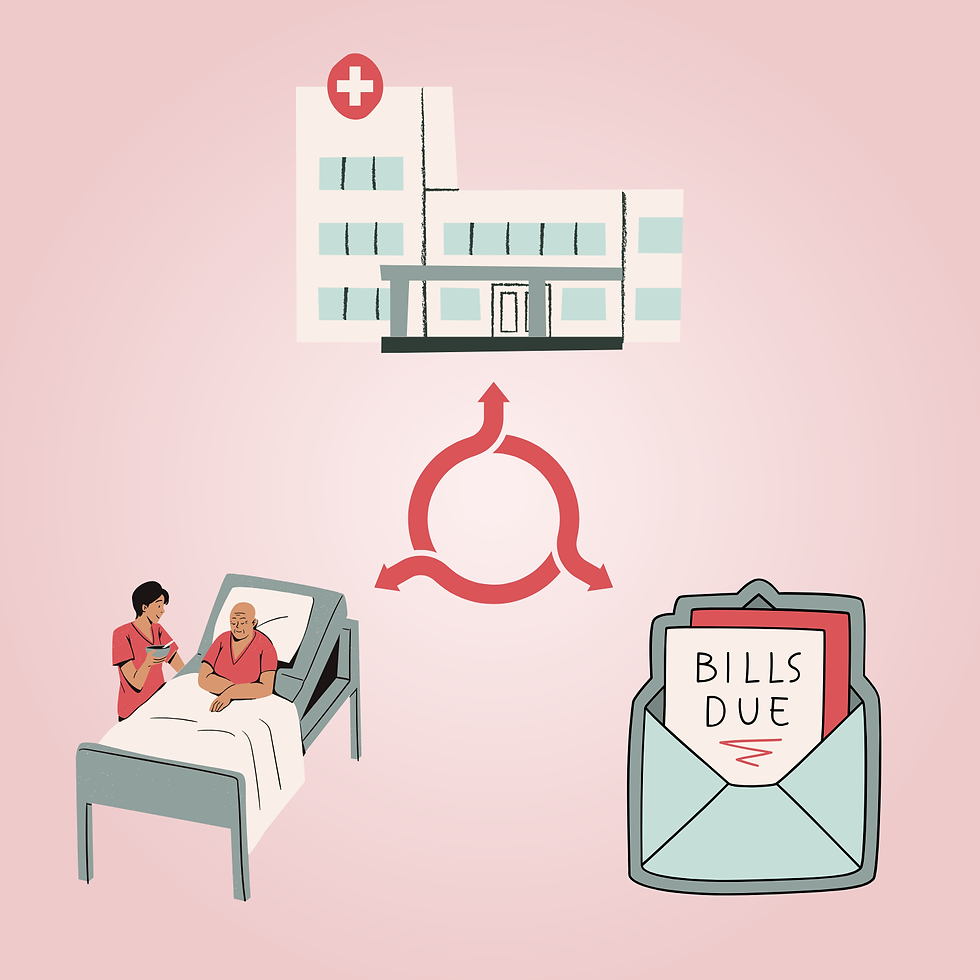Removing the Barriers to Infertility Care
- Anna Chen
- Mar 7, 2023
- 3 min read
While the decision to get pregnant and have a child is a decision that is often carefully thought over, for some that option is taken away. Infertility affects millions of people of reproductive age, with some estimates suggesting that between 48 million couples and 186 million individuals are affected globally (WHO). The causes for this condition vary, with most being traced back to abnormalities in sperm, the ovaries, uterus, fallopian tubes, and the endocrine system.
However, there are a variety of options for those looking for treatment. These treatments can depend on multiple factors, including the cause, how long an individual has been infertile, age, as well as personal preferences. One treatment is the use of assisted reproductive technology, with the most common technique being in vitro fertilization (IVF). IVF involves “stimulating and retrieving multiple mature eggs, fertilizing them with sperm in a dish in a lab, and implanting the embryos in the uterus several days after fertilization” (Mayo Clinic). Other options include artificial insemination, in which sperm is transferred directly into someone’s uterus, and ovulation induction, where hormone medication is used to stimulate the ovaries to produce multiple mature follicles and ova.

Despite these different options for infertility care, limited information, high costs, and stigma, put this care out of reach for many, especially those in marginalized communities. One of the greatest obstacles to obtaining infertility care is the high out-of-pocket cost. Combined with the limited number of private insurance and public programs that covers infertility services, this economic barrier denies many the opportunity for infertility treatment. In fact, the median cost of a single IVF cycle in the United States is $19,200 (WHO). This hefty price tag is one that only those of high economic standing can afford, with one study finding that women without insurance coverage were three-times more likely to discontinue treatment after their first cycle because of the high price (Bronwyn Bedrick et al.).
Racial disparities in access to infertiliy care is well-documented within the United States. For example, while black women of reproductive age are 80% more likely to report they’re infertile compared to white women, they are actually 20% less likely to receive infertility care (Ada C. Dieke et al.). Furthermore, Hispanic and American Indian/Alaska Native non-Hispanic women have shown below average rates of infertility care use (Ada C. Dieke et al.). Part of the reason for these disparities could be the way IVF and other infertility care is marketed. As most people believe that IVF is something only the rich and white do, minorities are less likely to seek out these treatments. However, the root of the problem lies in our healthcare system: the high costs of care and lack of insurance coverage.
These barriers don’t have to exist. With better information given to the general public, more people can learn about the options they have for infertility care. More importantly, at the very least, we need to fight to have infertility care covered by insurance. Removing these drastic economic barriers will allow more people to gain access to this vital treatment. Being able to have a child is a basic human right and it’s the responsibility of those involved in reproductive and fertility care, including physicians and policymakers, to be aware of and address these barriers.
Edited by: Nana Osaki
Graphic Designed by: Alejandra Gonzalez-Acosta
References
https://www.who.int/news-room/fact-sheets/detail/infertility
https://www.mayoclinic.org/diseases-conditions/infertility/diagnosis-treatment/drc-20354322
Bronwyn Bedrick et al., Factors Associated with Early In Vitro Fertilization Treatment Discontinuation (July 2019), 112 FERTILITY & STERILITY 105 (July 2019), https://www.fertstert. org/article/S0015-0282(19)30250-X/fulltext.
Ada C. Dieke et al., Disparities in Assisted Reproductive Technology Utilization by Race and Ethnicity, United States, 2014: A Commentary, 26 J. WOMEN’S HEALTH 605 (2017), https://www.ncbi.nlm.nih.gov/pmc/articles/ PMC5548290/ (hereinafter Dieke, Disparities)



Comments